The Alaskan malamute breed is a loving, loyal, playful, and dignified dog. It is a strong, heavy-duty worker of the Spitz type breed. The Alaskan malamute is a breed that has incredible power, energy, endurance, independence, and intellect.
The Alaskan malamute is one of the most powerful polar sled dogs. Malamutes The Inupiaq people of Alaska’s Norton Sound region were said to have tamed malamutes. Despite their huge size and height, they are sociable and people-oriented, making them excellent family dogs but lousy guard dogs.
Highlights/Content
- History of Alaskan malamute
- Breed Overview
- Appearance
- Temperament
- Health
- Alaskan Malamute Dog Care
- Advantages and Disadvantages
- Questions related to Alaskan Malamute
- Photo gallery
History of the Alaskan Malamute
The domesticated wolf-dogs that the first Paleolithic hunters used to cross the Bearing Straight’s land bridges more than 4,000 years ago are thought to be the ancestors of the Alaskan Malamute. Archaeological evidence strongly suggests that the Malamute was the first dog that was associated with humans.
They got their name from the native Inuit tribe known as the Mahlemuts, who settled in Northwest Alaska along the shores of Kotzebue Sound. In 2010, they became the official state dog of Alaska and shared food with the Malamute in exchange for helping with hunting and hauling meat.
Because dogs were able to keep a baby very warm during the cold winters in Alaska, they were frequently used to kill human babies. The Alaskan Malamute is a breed that is very affectionate and trustworthy. They get along well with all members of the family as well as other dogs.
They enjoy being a member of the family as well, even though they thrive in freedom and the great outdoors. Although they are very vocal and howl frequently, they are not known to bark. Malamutes require regular exercise and frequently thrive when given work to do.
They are very strong and built for heavy work. They are able to travel very far in a short amount of time due to their size and strength, and due to their extremely trusting nature, they frequently accompany other people on adventures.
Breed Overview
- Origin: Alaska (United States)
- Nick Name: Mal Or Mally
- Life Span: 10-14 years
- Height: Dogs-25inches, Bitches- 23inches
- Weight: Dogs-38 Kg Bitches-34 kg
- Coat: Thick, a double coat, with plus under coat
- Color: gray, sable, black, or Red always with
- White, as well all white and brown
- Litter Size: 4-10 puppies
- Breed Size: Large
- Energy Level: High
- Exercise Need: High
- Barking level: Howler
- Patterns: sable, tricolor
- Breed Group: Working
Appearance
The Alaskan Malamute dog is easily recognized by its thick furry body and the cap on its head. There is often a marked size difference between males and females. They are related to the Russian Samoyed, Siberian Husky, and Greenland Eskimo dogs.
Coat: The coat of the Alaskan Malamute is double coated. They may have been sled dogs in the past due to their strong shoulders, wide chests, and weatherproof coarse coats. Common shades of Alaskan malamute include gray and white, sable and white, black and white, seal and white, red and white, and plain white.
Undercoats: The undercoats of Alaskan Malamutes are oily and woolly, and their guard coats are thick. The undercoat is greasy and hairy and can be up to two inches thick.This breed is also distinguished by its face markings, such as a cap that covers the head and a face that can be completely white or marked with a bar and a mask.
Eyes: Alaskan Malamute eyes are almond-shaped.
Ears: Their ears are usually straight, wedge-shaped, small in relation to the head, and set at the side of the skull.
Neck: The neck of the Alaskan Malamute dog is strong and moderately arched.
Chest: The chest is well developed.
Back: The back is hard and well muscled.
Head: Broad heads
Muzzle: Bulky muzzles, compact bodies
Tails: Curved fluffy tails
Front legs: The front legs are heavily bony and muscular with a protective growth of hair between the arched toes, while the hind legs are broad and heavily muscled through the thighs.
Pads: The pads are thick and tough;
Toenails: Toenails are short and strong.
Temperament
Alaskan malamutes make wonderful human companions. They are one of the best recommended family dogs because they bond incredibly well with their owners and youngsters.
A malamute’s gait is steady, balanced and strong. He is quite agile and agile for his size. They are quick to make friends with strangers, making them less than guard dogs. They are not only very friendly, but also kind, loving and devoted.
Alaskan Malamutes are one of the most intelligent breeds. The Alaskan Malamute has a strong will as well as a powerful body. He seems to have a mischievous sense of humor. Malamutes have a tendency to roam in open spaces because they were originally bred to travel large distances.
Health
Alaskan Malamutes have the longest lifespan of any large dog, averaging 15 years. To keep malamute healthy, veterinarians recommend at least two hours of exercise each day.
Alaskan Malamutes are prone to hip and elbow dysplasia, a bone disorder that causes discomfort and pain in the dog. Hypothyroidism, which is caused by an underactive thyroid gland, and von Willebrand disease, an inherited blood clotting disease.
Cataracts, an eye condition that can lead to blindness, can also affect Alaskan malamute dogs. The Malamutes have chondrodysplasia, sometimes called dwarfism, and hemeralopia, or day blindness, both of which are inherited disorders.
Thrombocytopenia, a clotting condition caused by an inherited disease, is also a risk factor for Alaskan Malamute dogs. Polyneuropathy is an inherited condition that can cause spatial disorientation, loss of coordination and unsteadiness, paralysis of the limbs and face, as well as slow heartbeat.
Alaskan Malamute Dog Care
Given their size and power, it is critical to offer obvious, firm leadership to an Alaskan Malamute. This breed also requires a lot of grooming and physical exercise in order to live a happy and healthy life. Alaskan Malamute is not for the faint of heart, as she is a high-maintenance dog in many ways and requires a loyal owner who knows this.
Feeding
An Alaskan malamute should be fed a high-quality diet in appropriate and adequate amounts, and any diet should be appropriate for the dog’s age. Some dogs are prone to weight gain, so before feeding, keep an eye on your dog’s calorie intake and weight level.
Raw food is the best dog food for your Alaskan Malamute. A natural, whole-food diet can help your dog stay healthy and happy while also preventing a variety of common health conditions like obesity, joint, dental, and digestive problems, and common allergy symptoms like skin complaints and excessive itching.
It is essential to take into account the canine’s anatomy and digestive system when selecting the appropriate food for an Alaskan Malamute.
Since dogs’ digestive systems have not changed much since they were unidentified wolves, they are best suited to fresh, high-protein diets that primarily consist of meat, bones, and offal. A natural, raw diet aims to replicate this, which we refer to as “species-appropriate nutrition.”
An Alaskan Malamute’s optimal diet is one that is well-balanced and suitable for their age and energy requirements. High-quality protein, healthy fats, vitamins, minerals, and fiber from fruits and vegetables are typically included in this.
The stomach of a dog is not built to digest and ferment carbohydrates, which are the primary ingredient in kibble. Starchy carbs like rice, potato, legumes, and lentils are common in even grain-free kibble. Dog kibble puts pressure on the digestive system and spikes insulin, glucagon, and cortisol throughout the day, putting pressure on the pancreas.
Feed your dog fresh tripe, green tripe, which is sufficient. Sweets can be a valuable training aid, but too many can lead to obesity. The dog can also be fed dry food that is as natural as possible. Wrap the bones lightly and add the sauerkraut. A dog should always have fresh water with him.
Exercise
Alaskan malamutes require a lot of exercise and exertion. It can only be used to draw loads optimally. Taking the dog for long walks in nature is also important. The breed needs plenty of activity. Do it vigorously for at least four to five hours every day.
A wide yard with plenty of space to run around in can help keep these dogs active and balanced, but it is not enough to satisfy their demands. Consequently, you should start obedience training as soon as you get puppy.
Grooming
Alaskan Malamute Dog High-shedding breeds will require more regular brushing, are more likely to trigger certain types of allergies, and will require more consistent vacuuming and lint-rolling. This dog sheds its coat twice a year and sheds a lot of hair during this time. Brush Alaskan Malamutes regularly using a pin brush and metal comb.
Brush your Malamute’s teeth daily. Brushing your dog’s teeth regularly helps remove plaque from his teeth. Use canine toothpaste. Malamutes are usually bathed once a week, although pet malamutes can go six to eight weeks without a bath.
A malamute’s nails should be trimmed regularly. The ears and paws of the Alaskan Malamute also need to be Checked. Dirty ears can lead to infections, so keep checking the ears. Never feed it at the dinner table while you are eating.
Training
Obedience training a malamute can be a challenge for the Alaskan malamute owner. An ideal owner should have patience and a strong will to achieve good training results. Never use harsh training methods with Malamutes as this will only make the Malamute more difficult to train.
Start with a basic commands, such as “Sit!” Let your dog sit in front of you. Take some treats in your palm and carefully slide them over the dog’s head, near his ears. If dog is leaning backwards, use your other hand to gently touch his back toward his tail to help him sit. Remember to praise dog immediately after completing a successful command. A training session should not last more than five minutes.
Alaskan Malamute Advantages and Disadvantages
Advantage
- They have high intelligence.
- Their loyalty is amazing
- They are famous for protection.
Disadvantage
- Training an Alaskan malamute is not easy.
- They need a lot of exercise.
- It costs more to feed them.
Questions related to Alaskan Malamute
1. How Much Does an Alaskan Malamute Cost?
Alaskan Malamutes puppies are between $500 to $2,500.
2. What is the Alaskan Malamute lifespan?
This is the relatively healthy breed with an average lifespan of 12 years.
3. Are Malamutes suitable pets?
Malamutes are a great pet for families with a lot of activity, but due to their large size, strength, and stamina, they may not be the best choice for everyone. Due to their high level of energy, malamutes should not be left alone with young children, vulnerable adults, or the elderly.
4. Can a Malamute be left alone?
Malamutes, who are naturally social dogs, rarely thrive when left alone for extended periods of time. It is strongly suggested that you keep your dog in their crate whenever you need to leave them alone at home.
5. Are Alaskan Malamutes beneficial for new dog owners?
Due to the demands, they place on exercise and training, Alaskan Malamutes are not suitable for first-time owners. We recommend working up to the Malamute breed by owning other, more laid-back large breeds or looking into dog fostering if you are absolutely certain that you want to own one in the future.
Alaskan Malamute Photo gallery
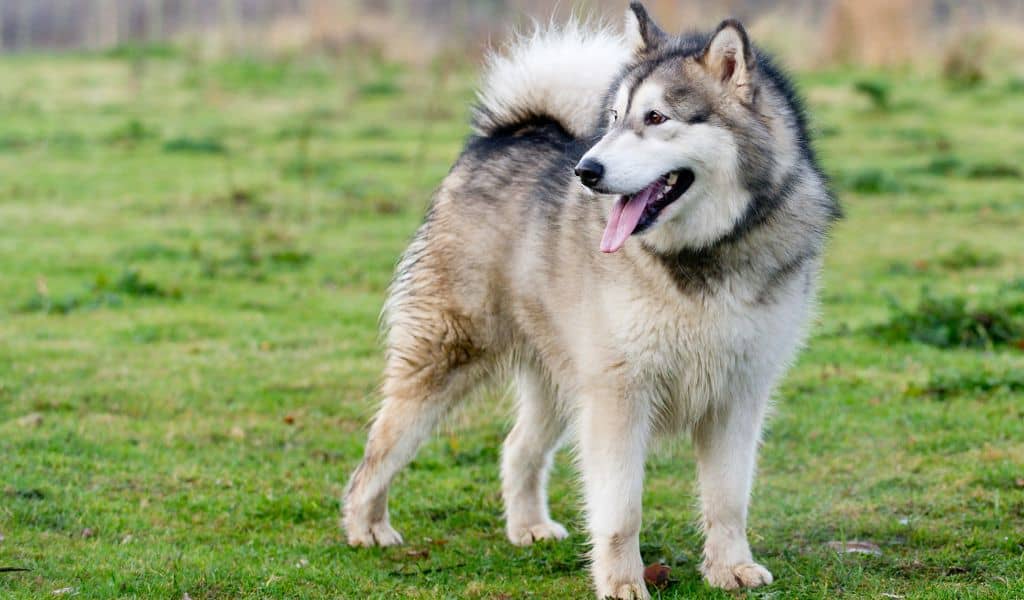
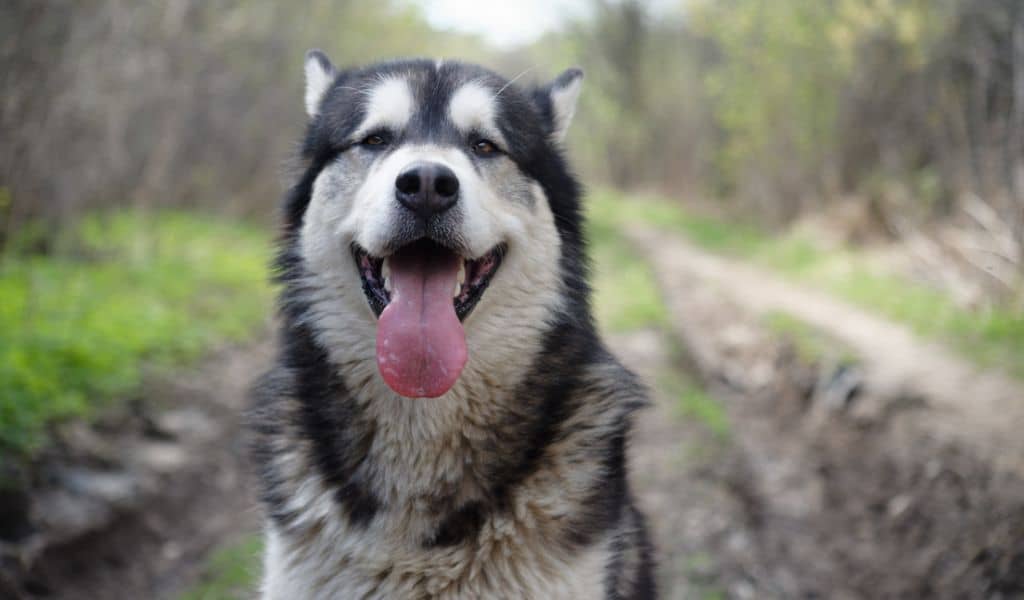
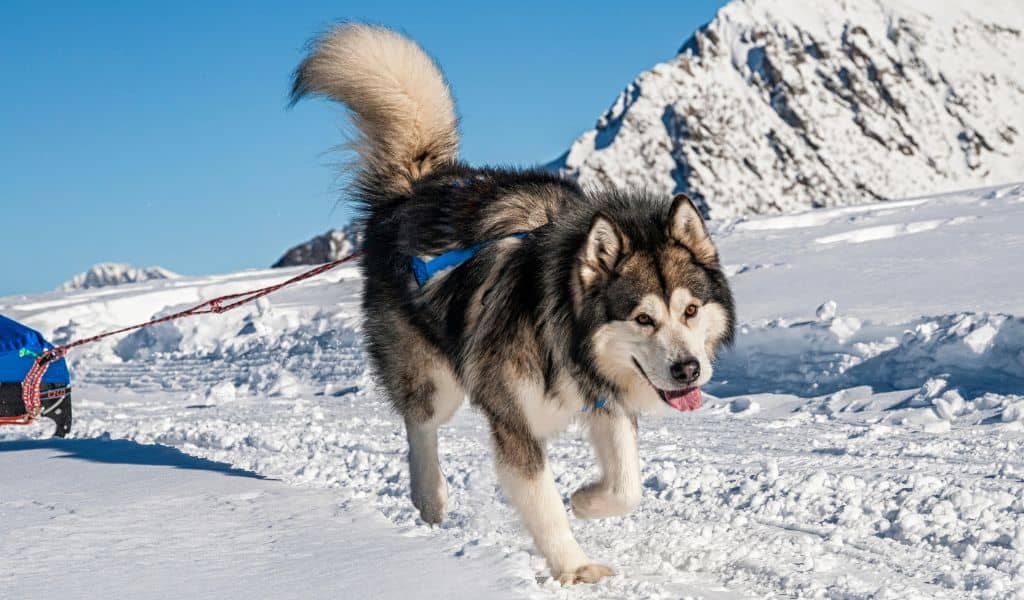
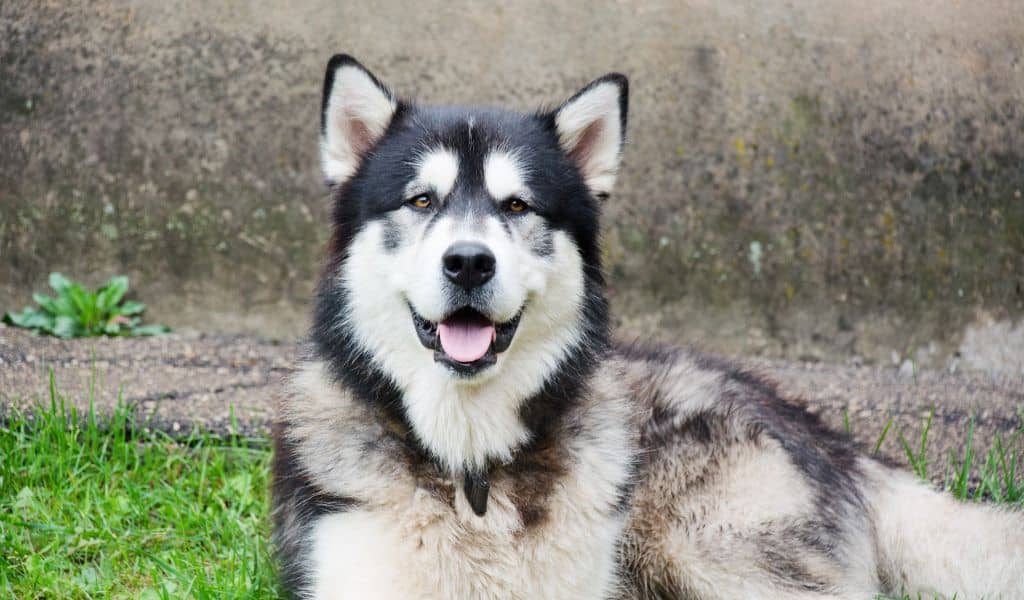

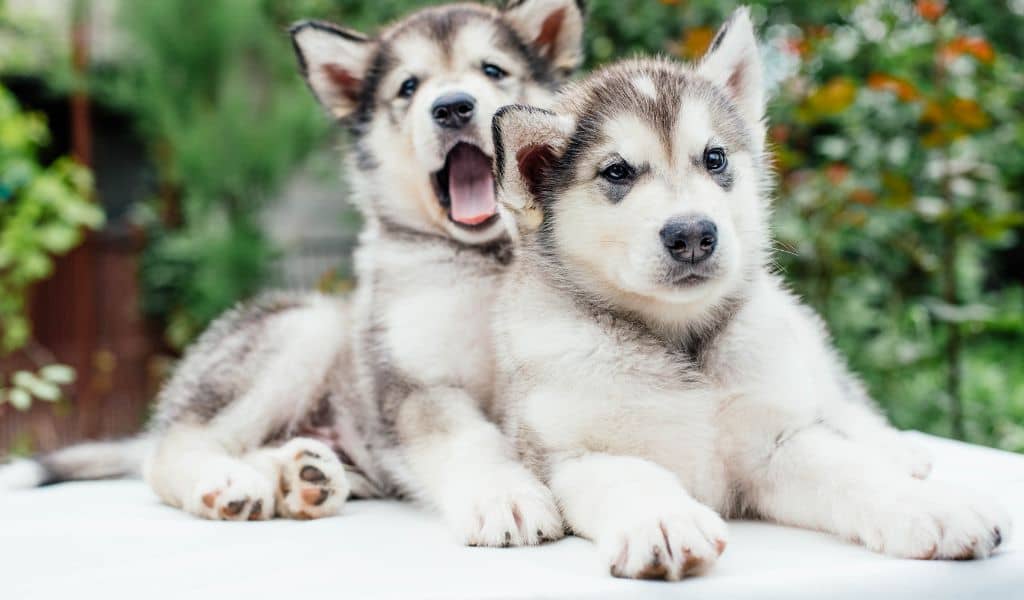
Got some questions? Or some suggestions? That’s why we’ve got a comments section on this blog! You can feel free to leave a comment or two down below, and we’ll get back to you as soon as possible!
We love reading your messages……
